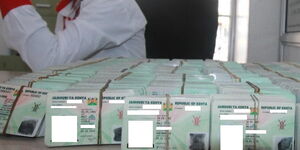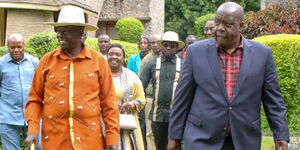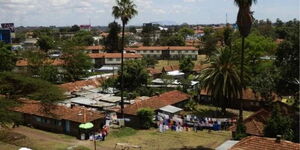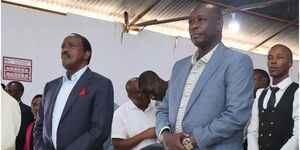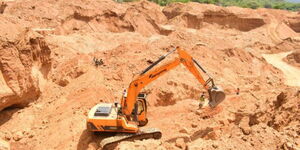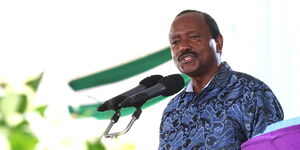Thika Road hosts some of the populous estates and the area is loved by Kenyans due to access to good infrastructure and basic amenities.
The area boasts of some leafy suburbs and informal settlements, but few people understand the interesting stories that led to the naming of the popular estates.
Names have a deeper meaning in African culture and with influence from white settlers or local ethnic groups- in this case, Kikuyu- here is how these estates got their names.
1. Juja
This was the property of Lord and Lady McMillan — who gave Nairobi the famous McMillan Memorial Library. The estate was once a farm that was owned by the Nettlefold Family, shareholders in Guest, Keane and Nettlefold.
Juja Farm was initially called ‘Weru wa Ndarugu’ (Ndarugu Plains), later renamed by Lord McMillan who bought a ranch in the area and brought two West African statues named ‘Ju’ and ‘Ja’ hence Juja that’s faced by Mt Kilimambogo (buffalo mountain) in the east.
2. Witeithie
The name “Witeithie” comes from the Kikuyu people and it means help yourself. After independence, Mzee Jomo Kenyatta went around the Mt Kenya region giving land that had previously been owned by White settlers. A group of women who acquired land after independence concocted the name.
When Mzee Jomo Kenyatta's regime took over, he gave that land, then owned by a white farmer, to the Nyakinyua Women Group. It was a group of dancers who entertained him.
The group members subdivided the land and each was allocated a plot and told: “Witeithie Gwaka Gwaku (Help yourself build a home).”
3. Muthaiga
The name Muthaiga refers to a tree whose bark was used as medicine by the Kikuyu.
Before Muthaiga became a residential area, it was part of Karura Forest. Africans used to worship in forests and hence this particular forest holds a certain sacred aura to it.
Muthaiga comes from the name of a healing tree that was common in the area and it was known among the Kikuyu for its medical benefits. In 1901, John Ainsworth, who was the Nairobi sub commissioner - equivalent to a County Commissioner in today's set-up, was given the mandate to oversee the lush estate.
4. Allsopp's
The estate was named after one of Kenya’s finest breweries, Allsopp's. This was a brewery that was set up by a White settler couple. The family ran the Allsopp's Brewery building that was overlooking the General Service Unit headquarters.
Established in 1938 as Taylor and Company brewery, this was one of the main competitors to Kenya Breweries, which had been set in Nairobi’s Ruaraka plains in 1922 by George and Charles Hurst - two brothers who were initially based in Kitale as farmers who thought their future would be in a brewery.
Allsopp (East Africa) Ltd was amalgamated with EABL to form the East African Breweries Group.
5. Zimmerman
Zimmerman Estate, located off Thika Road between Kasarani and Githurai 44, exemplifies all that is good and bad with this city.
The estate was named after a famous German zoologist Paul Zimmerman, who lived in the area during the colonial period. He built the second-largest taxidermy factory on the northern plains of Nairobi.
Zimmerman Estate stands on the same ground that the company made its name before the national ban on hunting in 1977 deprived it of animals.
6. Roysambu
The estate was known as the “Royal Suburbs” during colonial times. However, the Africans in Nairobi pronounced it as Roy-Sabu and thus it got the name “Roysambu”.
7. Thika
Thika gets its name from the Maasai word, sika which means rubbing something off an edge. Locals however called it Thiririka due to a nearby river in the area.
The river that is now called Thika River is a tributary of the Tana River. If indeed this etymological origin is legitimate, it would mean the river influenced the town name after which it was then renamed.
8. Mathare
The estate has a long history. Its first residents arrived in the 1920s. Mathare made a mark for opposition to the colonial government with residents participating in the Mau Mau anti-colonial movement.
The origin of its name is not well known but some have intimated that African labourers would be dropped there by white settlers and told ‘go to your motherland’. However, due to language barriers, the black Kenyans could not pronounce the English words so they called the place Mathare.
Others have intimated that “Mathare” comes from the Kikuyu word for Dracena trees.
9. Ruaraka
Ruaraka, same with Ruaka, loosely translates to ‘‘river of women’’ in its full form ‘‘ruui rwa aka.’’ The town was named after a river that passes through the town.
During the traditional Kikuyu ceremonies, women undergoing initiation would wash in the river on the morning before circumcision.
The ancient practice is now illegal in the country but, the name remains.
10. Ruiru
Ruiru began as a settlement of coffee farms after the establishment of the railway next to the town. The name comes from the river that runs through it.
The full name is "ruui ruiru", meaning black river. During certain seasons, the river would turn black because of the dark cotton soil that flowed into it during heavy rains.


